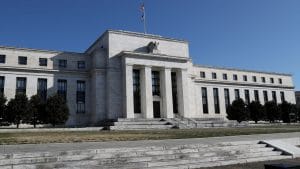Leaders Speak | April-June GDP — good report card in quarter one, but difficult to sustain
Summary
As India’s April-June GDP growth numbers are to be out today, Acuité Ratings & Research’s Chief Economist Suman Chowdhury predicts that with a 7.7 percent growth the first quarter will mark a peak for the fiscal 2024. However, further ahead into the current and subsequent quarters, the growth outcomes are expected to moderate with slower momentum in exports and increased uncertainty on consumption growth, and therefore the GDP growth for the full financial year is expected to be around 6.0 percent, he writes.
We at Acuité Research estimates a solid GDP growth of 7.7 percent year-on-year in the first quarter of financial year 2024. While continued traction in contact-intensive services, steady growth in ITeS exports and a step up in construction activity through Government’s consistent capex push have driven the services sector, a delayed start to this year’s monsoon and deflation in input prices have also buoyed the industrial sector in the first quarter. These apart, the favourable base factor will also help to pull up the figure.
Acuité Research, nevertheless, forecasts GDP growth at 6.0 percent for the full FY24 implying therefore that the first quarter will mark a peak for the fiscal. Further ahead into the current and subsequent quarters, we expect growth outcomes to moderate with slower momentum in exports and increased uncertainty on consumption growth.
Although global growth has held up better than envisaged at the start of the year, there is no denying an impending slowdown vis-à-vis 2022. IMF’s latest forecasts indicate global growth is expected to moderate to 3.0 percent in 2023 from 3.5 percent in 2022. US GDP growth has held up well so far, but it stands countered somewhat by the downside in Eurozone, India’s other key export partner. Both, US and EU together account for nearly 35 percent of India’s export basket. Trade is expected to be the primary drag on global growth; as per WTO, world merchandise trade volume is expected to grow at 1.7 percent in 2023, 100 bps lower when compared to 2022.
India is unlikely to remain insulated from such adverse trade spillovers. Growth in Indian exports has remained in contraction mode in the current year (-14.4% YoY in April-July 23 period), led by traditional sectors in which India enjoys global competitiveness and higher income elasticity such as gems & jewellery, plastic & rubber, textile and leather in addition to petroleum products. Of the 100 bps slowdown in India’s GDP growth in FY24 vis-à-vis last year, nearly 50 bps can perhaps be explained by moderation in exports.
In respect of domestic demand, transmission of higher interest rates may pull down urban consumption growth. Hopefully, this should be offset by an uptick in rural demand. The recent improvement in terms of trade for farm producers, higher cash flows post last rabi output and higher procurement prices along with continued support to the agricultural sector ahead of elections are some factors that lend credence to this view.
Southwest monsoon, while reeling under a 7 percent deficit vs LPA on a cumulative basis, is expected to pick-up pace in September the year. Fortunately, bountiful rainfall in July this year had ensured that Kharif sowing achieved same levels as last year, but the substantial rainfall deficit in August may weigh on crop yields. Pulses has been a laggard in terms of area sown and has emerged as a point of worry from an inflation perspective along with cereals. With Rabi output contributing as much share towards annual agricultural production as Kharif, El Nino and any subsequent climate risks will be an important determinant of agricultural growth and rural demand particularly in the second half of the fiscal.
Countering the global headwinds, support to growth is expected from the twin engines of investments and consumption of services. Government driven capex could find incremental support from private sector capex, at a time when capacity utilisation levels have improved significantly. Economy wide capacity utilisation level at around 76 percent as of March, 2023, as measured by RBI’s OBICUS survey, stands at a 40 quarter high and well above LPA of 73.3 percent.
Contact-intensive services in post Covid times, continue to remain in a ‘rebound’ mode
While a part of it is pent-up demand financed by Covid induced savings, some upside can perhaps be attributed to structural shift as Indian economy matures reflected in rapid growth of sectors such as trading, distribution, transport, logistics along with penetration of financial services. Further, export of services especially in IT/ITeS found support from cost minimisation efforts seen globally.
Financial year 2024 will be a year of pulls and pressures for India. There is considerable uncertainty with respect to the FY24 GDP growth outlook, as depicted by the wide forecast range of 5.5-7.0 percent in RBI’s recent survey. Notwithstanding an unsupportive global economic milieu and the moderation in growth (vis-à-vis FY23), India will still be one of the fastest expanding large economies globally. China has disappointed in emerging as a tailwind to global growth, giving India the opportunity to underpin its economic might in the current year and beyond.
This has well coincided with the about-to-conclude G20 presidency, which India has leveraged adeptly to enhance its global influence in most spheres. The growth prospects backed by reforms in areas of public digital infrastructure, green investments, space/defence etc. combined with macroeconomic stability offer a perfect backdrop for India to sustain its attractiveness as the global destination for investments and fostering economic partnerships.
—The author, Suman Chowdhury, is Chief Economist and Head – Research, Acuité Ratings & Research Limited. The views expressed are personal.

Elon Musk forms several ‘X Holdings’ companies to fund potential Twitter buyout
3 Mins Read
Thursday’s filing dispelled some doubts, though Musk still has work to do. He and his advisers will spend the coming days vetting potential investors for the equity portion of his offer, according to people familiar with the matter









 Listen to the Article
Listen to the Article  Daily Newsletter
Daily Newsletter














